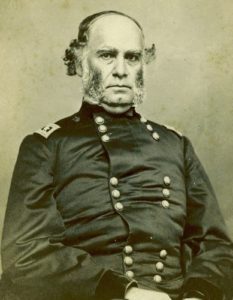
Statehood:
When Arkansas applied for statehood, the slavery issue was again raised in Washington, D.C.. Congress eventually approved the Arkansas Constitution after a 25-hour session, admitting Arkansas on June 15, 1836 as the 25th state and the 13th slave state, having a population of about 60,000.
Civil War and Reconstruction:
Plantation agriculture set the state and region behind the nation for decades. The wealth developed among planters of southeast Arkansas caused a political rift to form between the northwest and southeast.
Many politicians were elected to office from the Family, the Southern rights political force in antebellum Arkansas. Residents generally wanted to avoid a civil war. When the Gulf states seceded in early 1861, Arkansas voted to remain in the Union. Arkansas did not secede until Abraham Lincoln demanded Arkansas troops be sent to Fort Sumter to quell the rebellion there. On May 6, a state convention voted to terminate Arkansas’s membership in the Union and join the Confederate States of America.
Arkansas held a very important position for the Confederacy, maintaining control of the Mississippi River and surrounding Southern states. The bloody Battle of Wilson’s Creek just across the border in Missouri shocked many Arkansans who thought the war would be a quick and decisive Southern victory. Battles early in the war took place in northwest Arkansas, including the Battle of Cane Hill, Battle of Pea Ridge, and Battle of Prairie Grove.

Union General Samuel Curtis swept across the state to Helena in the Delta in 1862. Little Rock was captured the following year. The government shifted the state Confederate capital to Hot Springs, and then again to Washington from 1863–1865, for the remainder of the war. Throughout the state, guerrilla warfare ravaged the countryside and destroyed cities. Passion for the Confederate cause waned after implementation of programs such as the draft, high taxes, and martial law.
End of the Reconstruction:
In 1874, the Brooks-Baxter War, a political struggle between factions of the Republican Party shook Little Rock and the state governorship. It was settled only when President Ulysses S. Grant ordered Joseph Brooks to disperse his militant supporters.
After Reconstruction, the state began to receive more immigrants and migrants. Chinese, Italian, and Syrian men were recruited for farm labor in the developing Delta region. None of these nationalities stayed long at farm labor.
Some early 20th-century immigration included people from Eastern Europe. Together, these immigrants made the Delta more diverse than the rest of the state. In the same years, some black migrants moved into the area because of opportunities to develop the bottomlands and own their own property.
Construction of railroads enabled more farmers to get their products to market. It also brought new development into different parts of the state, including the Ozarks, where some areas were developed as resorts. In a few years at the end of the 19th century, for instance, Eureka Springs in Carroll County grew to 10,000 people, rapidly becoming a tourist destination and the fourth-largest city of the state. It featured newly constructed, elegant resort hotels and spas planned around its natural springs, considered to have healthful properties. The town’s attractions included horse racing and other entertainment. It appealed to a wide variety of classes, becoming almost as popular as Hot Springs.
